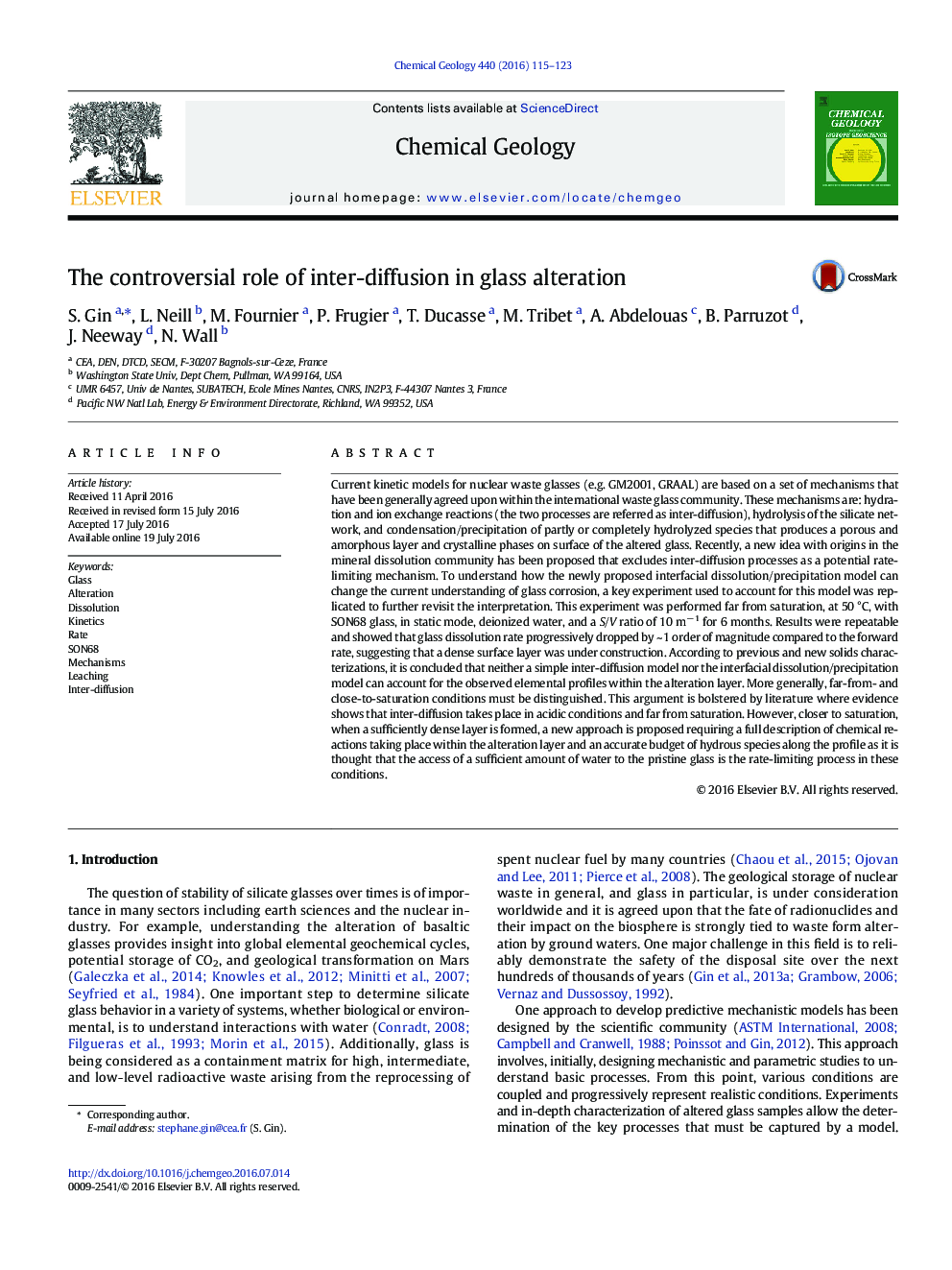| Article ID | Journal | Published Year | Pages | File Type |
|---|---|---|---|---|
| 6436024 | Chemical Geology | 2016 | 9 Pages |
Current kinetic models for nuclear waste glasses (e.g. GM2001, GRAAL) are based on a set of mechanisms that have been generally agreed upon within the international waste glass community. These mechanisms are: hydration and ion exchange reactions (the two processes are referred as inter-diffusion), hydrolysis of the silicate network, and condensation/precipitation of partly or completely hydrolyzed species that produces a porous and amorphous layer and crystalline phases on surface of the altered glass. Recently, a new idea with origins in the mineral dissolution community has been proposed that excludes inter-diffusion processes as a potential rate-limiting mechanism. To understand how the newly proposed interfacial dissolution/precipitation model can change the current understanding of glass corrosion, a key experiment used to account for this model was replicated to further revisit the interpretation. This experiment was performed far from saturation, at 50 °C, with SON68 glass, in static mode, deionized water, and a S/V ratio of 10 mâ 1 for 6 months. Results were repeatable and showed that glass dissolution rate progressively dropped by ~ 1 order of magnitude compared to the forward rate, suggesting that a dense surface layer was under construction. According to previous and new solids characterizations, it is concluded that neither a simple inter-diffusion model nor the interfacial dissolution/precipitation model can account for the observed elemental profiles within the alteration layer. More generally, far-from- and close-to-saturation conditions must be distinguished. This argument is bolstered by literature where evidence shows that inter-diffusion takes place in acidic conditions and far from saturation. However, closer to saturation, when a sufficiently dense layer is formed, a new approach is proposed requiring a full description of chemical reactions taking place within the alteration layer and an accurate budget of hydrous species along the profile as it is thought that the access of a sufficient amount of water to the pristine glass is the rate-limiting process in these conditions.
